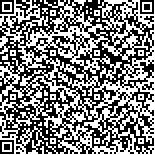下载中心
优秀审稿专家
优秀论文
相关链接
摘要

针对框幅式影像传统的空中三角测量算法不适用于三线阵影像, 因此必须设计相应的数学模型。三线阵推扫式传感器在成像时, 不同扫描线对应的摄影中心位置和姿态都不一样, 空中三角测量解算时, 外方位元素个数大于观测值个数, 理论上无法解算每一条扫描线的方位元素, 因此需要采用合适的数学模型模拟卫星轨道。目前常用的有3种轨道模型:线性多项式模型, 分段多项式模型和定向片模型。本文利用“天绘一号”卫星的真实数据, 在WGS-84坐标系统下进行3种模型的平差对比试验, 同时采用不同的控制点布设方案, 分析各模型在不同控制点布设方案下所能达到的精度水平。
Space borne linear array sensors have been introduced into photogrammetry since twenty years ago. However, the traditional solution of frame photograph cannot deal with image data obtation by linear array sensors because the position and attitude observations of the spacecraft vary at each scanner line. Thus it is impossible to determinate the exterior orientation parameters of each scanner line. A proper approximation has to be applied to the spacecraft trajectory model to reduce the unknown factors in bundle adjustment. There are three models feasible to represent the satellite trajectory: Quadratic Polynomial Model (QPM), Systematic Error Compensation Model (SECM), and Orientation Image Model (OIM). Revealing the differences of the three sensor models and relationships between different control strategies and the fi nal accuracy of geo-referencing after bundle adjustment is the main purpose of this paper. To fully evaluate the accuracy that the space borne three-line scanner can achieve, experiments with LMP, SECM and OIM triangulation algorithms are performed with a 500 km length data sets of the Mapping Satellite-1 under the WGS-84 coordinate system.

